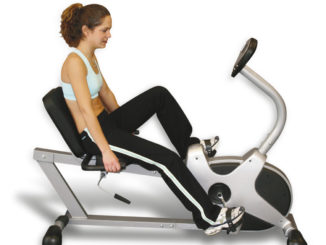
If you believe that training is just something that athletes do, then you may be surprised. Definitely, with only a few exceptions, anyone can train in order to lead the healthiest lifestyle possible.
No matter if you are interested in losing weight, or if you simply want to feel better, all you have to do is learn about heart rate zones and the ways that they can help you keep your workout routine as effective as possible. Heart Zone Training is one of the most effective ways to approach fitness training.
What Are The Heart Rate Training Zones?
Heart rate zones are expressed as a percentage of the individual maximum heart rate. These heart rate zones are the method for identifying the intensity of a workout and the result advantage.
Once you have established your individual maximum heart rate, you will be able to follow a workout routine custom fit to the particular heart rate zones that suit your needs.
The Heart Rate Training Zones:
-
The Healthy Heart – 50 – 60%
-
Temperate – 60 – 70%
-
Aerobic – 70 – 80%
-
Anaerobic – 80 – 90%
-
Redline heart rate zones – 90 – 100%
Understanding The Heart Rate Zones
Within each of the heart rate zones, there are a number of different exercise changes that take place because of time spent training in the zone. It is important to understand each of the five different heart rate zones.

Heart Rate Zone 1 – The Healthy Heart Zone
(between 50-60% of individual maximum heart rate)
The Healthy Heart Zone is the safest and the most comfortable zone. Most people are able to get into this zone with just a brisk walk.
While in this zone, you strengthen your heart, improve muscle mass and reduce cholesterol, body fat, blood pressure and the risk for disease. Working out in this zone will keep you healthy, but will not do much for keeping you fit by increasing strength or endurance.
Example: walking

Heart Rate Zone 2 – The Temperate Zone
(between 60-70% of individual maximum heart rate)
You can easily reach the temperate zone with a slow jog. While this zone still requires relatively little effort, your body will be trained to increase the rate of release for the fat cells being used to fuel the body.
Examples: light aerobics, swimming slowly, slow jogging

Heart Rate Zone 3 – The Aerobic Zone
(between 70-80% of individual maximum heart rate)
In the aerobic zone, which is easily reached by running, your functional capacity is greatly improved. The size and amount of blood vessels in the body is actually increased. In addition, respiratory rate and lung capacity also increase.
Your heart will effectively increase in strength and size, making it easier to exercise for longer periods of time without becoming fatigued too quickly.
However, you continue to metabolize carbohydrates and fats at a rate of about 50-50, which means that both the fats and the carbohydrates are burning off at the exact same ratio.
Examples: The rowing machine, using the cross trainer

Heart Rate Zone 4 – The Anaerobic Threshold Zone
(between 80-90% of individual maximum heart rate)
Going hard and running fast are the quickest ways to get into the anaerobic threshold zone, which is one of the most effective heart rate zones.
As your heart rate increases and you cross over from aerobic to anaerobic training, you become fitter and faster.
This is the point when your heart is no longer able to pump adequate oxygen and blood to supply the muscles as they exercise. The response is continual anaerobic contraction.
Examples: Jogging at a fast pace, interval training

Heart Rate Zone 5 – The Redline Zone
(between 90-100% of individual maximum heart rate)
The redline zone can be reached by running all out, and is primarily used during interval training. This type of exertion should only be done in short bursts.
Even professional athletes can only stay in the Redline Zone for a few minutes each time. Working out in this zone often hurts and the risk for injury is increased. Most people chose the other heart rate zones for the majority of their routine.




Be the first to comment